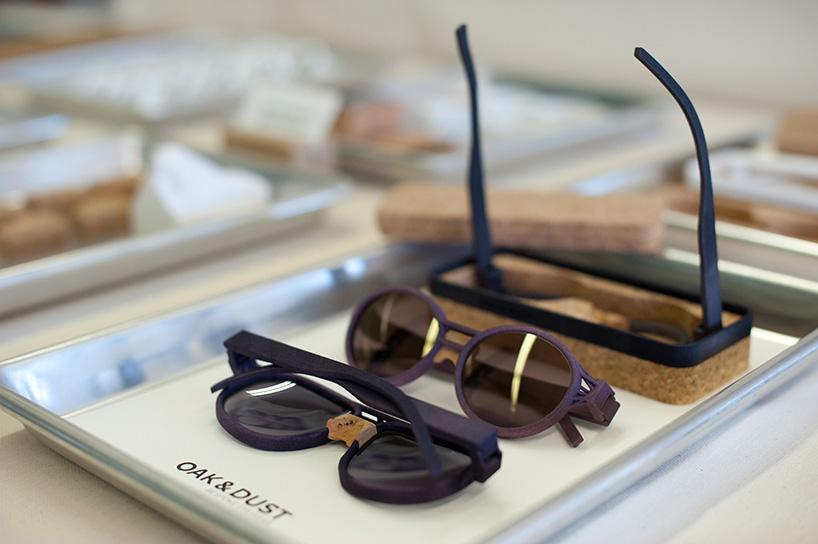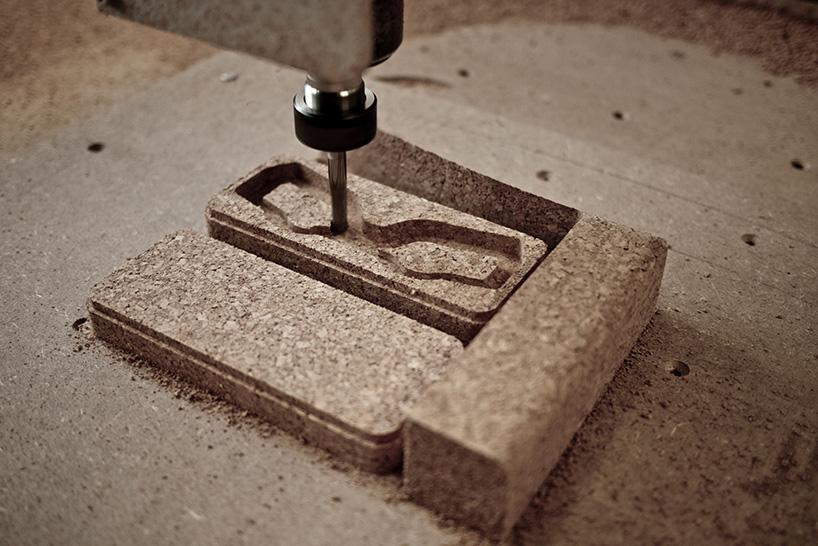Goegl Envisions Industrial Revolution, Produces 3D Printed Cork Eyewear “Oak and Dust”
Adrian Goegl has a vision that far surpasses just making glasses. Combining his interests in parametric design and generative manufacturing with his background as an optician, this industrial designer from Switzerland brings us “Oak and Dust” 3D-printed eyewear–a uniquely intense concept based in intellectual, industrial design.
Additive manufacturing is the perfect vehicle for the path Goegl wants to pave for his modern business model. Using Rhino CAD modeling, and a plug-in called Grasshopper, Goegl was able to design and print 3D prototypes of the eyewear, highlighting all the ways 3D design and 3D printing will revolutionize the optometry industry, with digitized designs, revisions, and prototypes saving time and expense.
“With this project I wanted to design a serious and useful concept which enables us to use 3D-printers directly at the point of sale in optical stores. the focus of my project was not how exactly the form of spectacle frames should be but rather how these frames can be designed, manufactured, and sold in the near future.”
During Geogl’s time working with customers and the eyewear products currently available, he made notes to fix some common challenge, such as:
- spectacles poorly distributing weight on the nose
- glasses sliding down the face easily
- over half of the cases delivered with glasses not holding them properly
Goegl chose cork as the obvious material choice to solve all the aforementioned problems. With cork, when a digitial scan of the customer’s nose is perfomed, they can mill the material for perfect fit. The bridge, made of cork, is easily removed and changed. The glasses are light, shouldn’t press into the face, and should remain at eye level due to the material. Cases can be 3D-printed along with the glasses, all at customer’s specifications and preferences. Sounds like a pretty perfect picture!
Goegl has a vision regarding the entire process, and it’s a mixture of pretty high-level science and intellectual concept. Along with his goal to process the eyewear in line with generative manufacturing, his product, “using computing capabilities to expedite the process,” is a good example of using 3D printing to show how quickly products can be designed and prototyped, revisited, upgraded—and coming to market at lightning speed—rather than at a snail’s pace with different teams, processes, machines, and approval departments holding up products going to market.
With parametric design in mind, his ultimate goal is not just in making nice glasses for people to wear but in applying rules to the process that show the relationship between design intent and design response as a whole—for all industrial examples.
From both a superficial and industrial/business point of view, I have great appreciation for what Goegl is doing. Although he states that he is less concerned with the actual product he currently has on display and is more concerned with providing a design and production innovation, the current eyewear protoypes seem to be well-packaged with an organic look that will surely draw consumers.
Do you see Goegl’s end product as a good example of generative manufacturing? Have you seen any other 3D-printed eyeglasses? Please share your thoughts and experiences with us in the Goegl 3D printer eyewear forum thread at 3DPB.com.
[Source: DesignBoom.com, Images Courtesy of Adrian Goegl]Subscribe to Our Email Newsletter
Stay up-to-date on all the latest news from the 3D printing industry and receive information and offers from third party vendors.
Print Services
You May Also Like
Low-cost “Suzy” Polymer Powder 3D Printer is Faster and Cheaper than Past Models
Polish laser powder bed fusion (LPBF) firm Sinterit has released a follow-up to its predecessors, Lisa and Nils, called Suzy, a $19,490 printer equipped with a 30W fiber diode laser....
India’s $58M Space Fund Is a Boon for AM Innovation
India’s space industry is picking up serious momentum. With a projected $44 billion space economy by 2033, the country is aggressively expanding its capabilities, fostering private-sector participation, and reducing its...
Japanese Advanced Manufacturing Capabilities Grow in Europe with Sodick’s Purchase of Prima Additive
The global economy is currently undergoing a reshuffling in terms of what gets manufactured where. In large part, this trend is being driven by new geopolitical alliances and the need...
Bosch Invests €6M into Serial Auto Part 3D Printing
German industrial conglomerate Robert Bosch GmbH, the world’s largest supplier of automotive parts, has announced a new investment into Nuremberg, Germany additive manufacturing (AM) facility. The nearly €6 million in...































